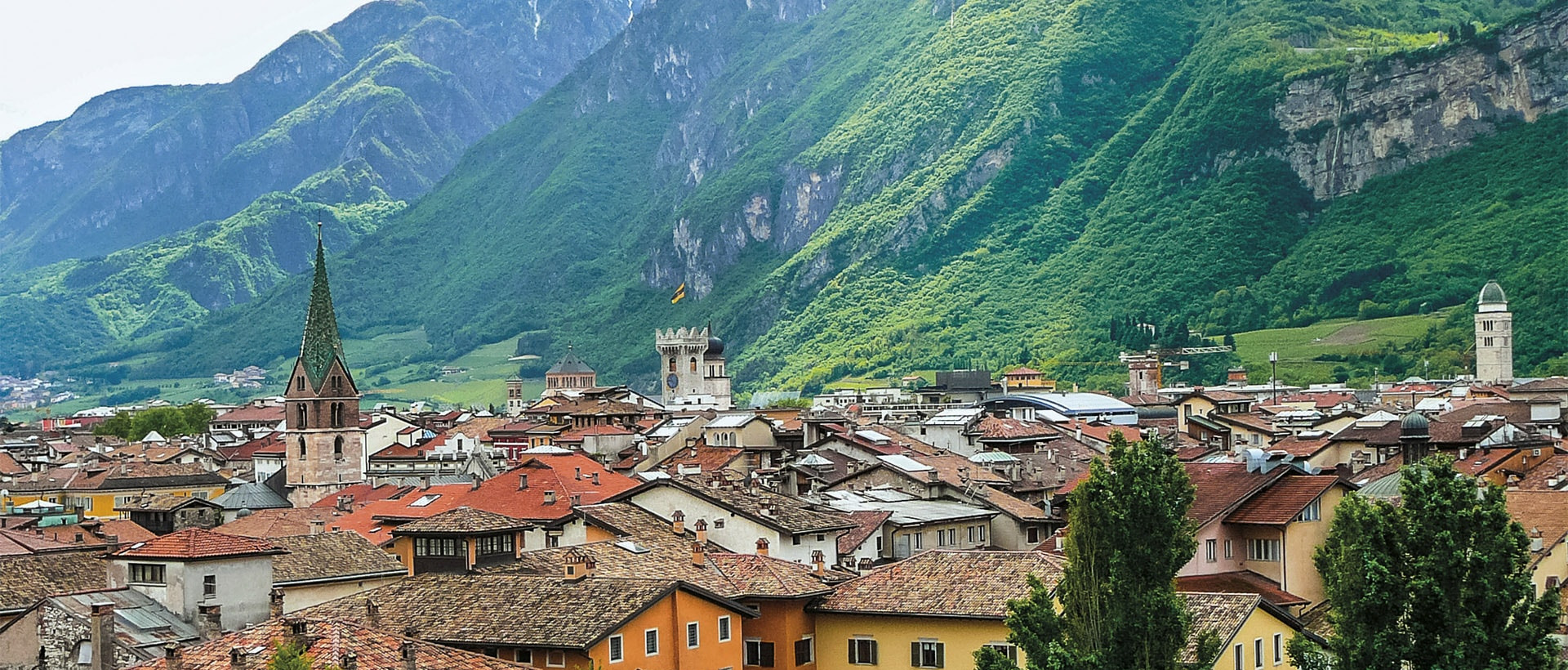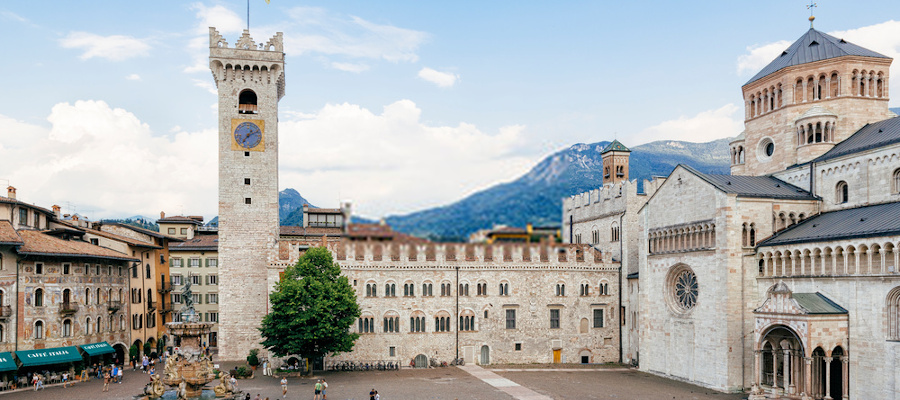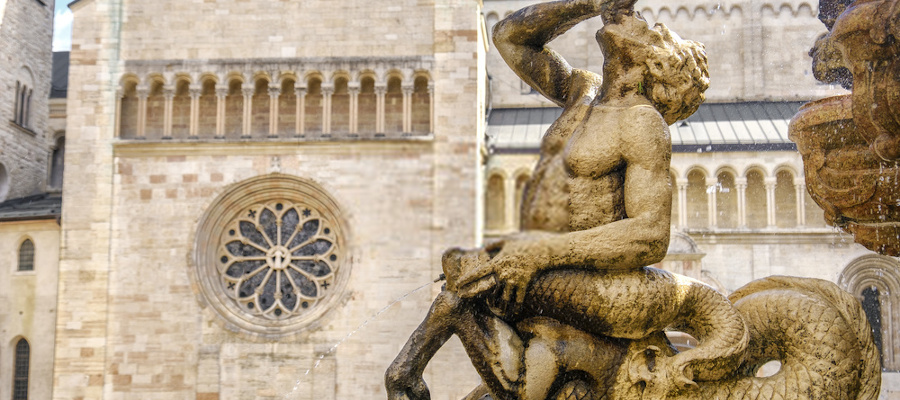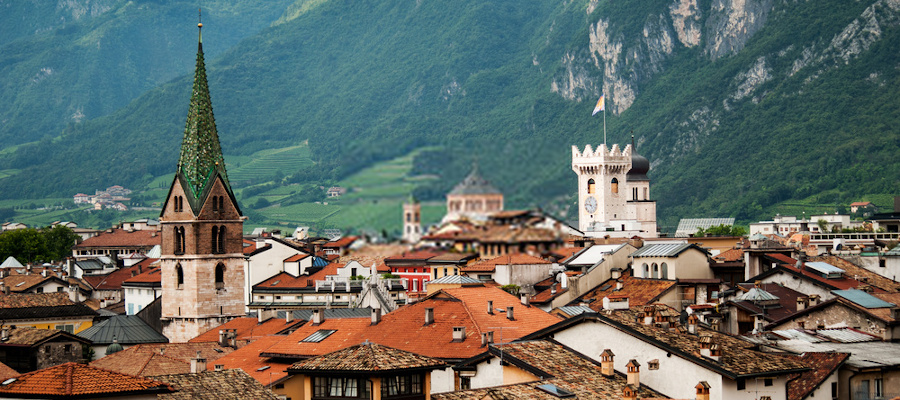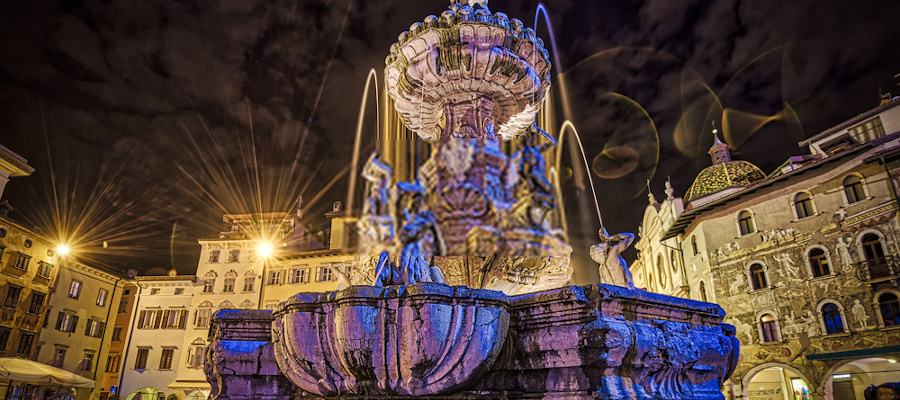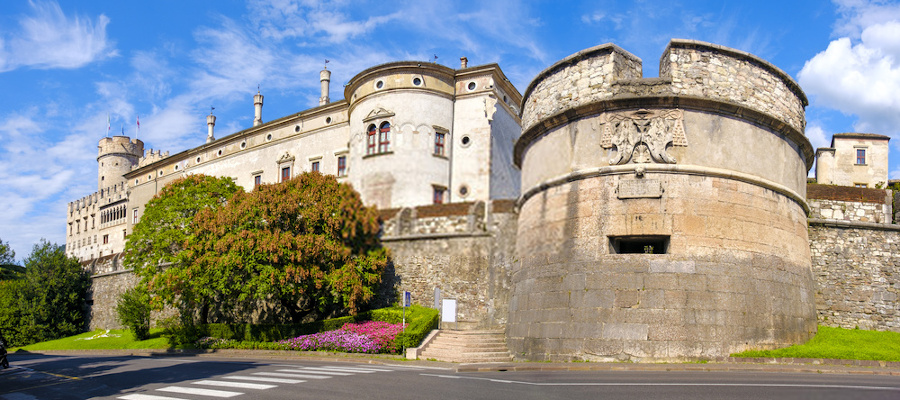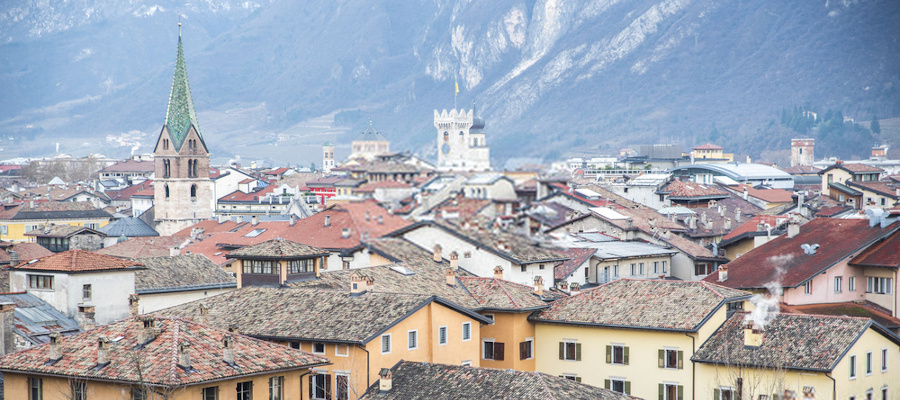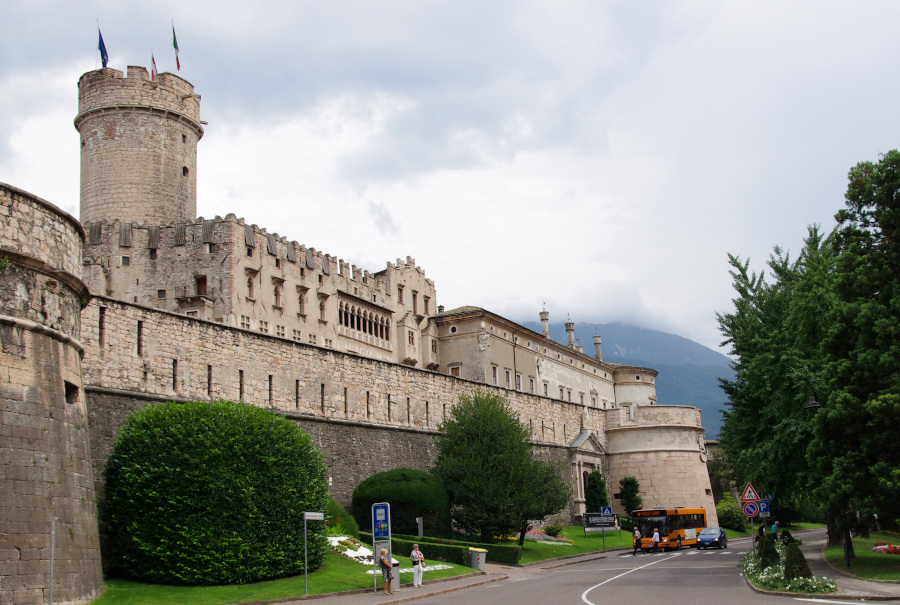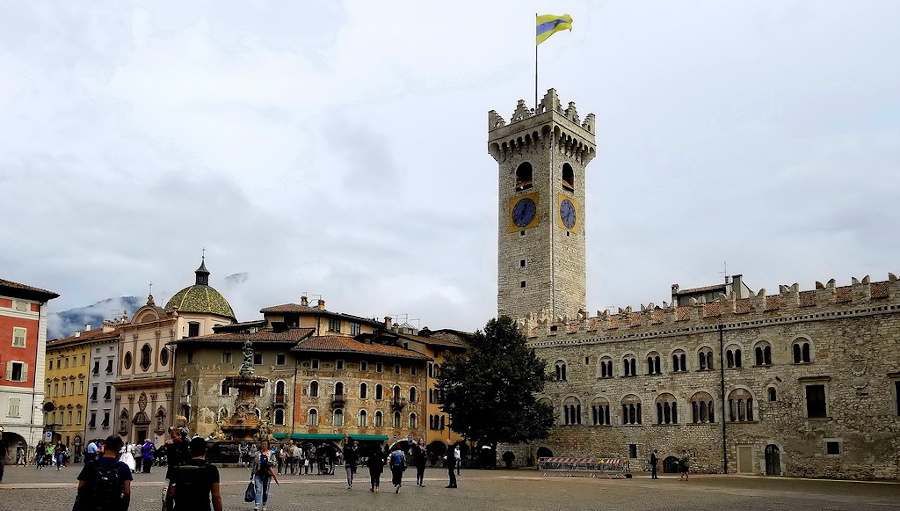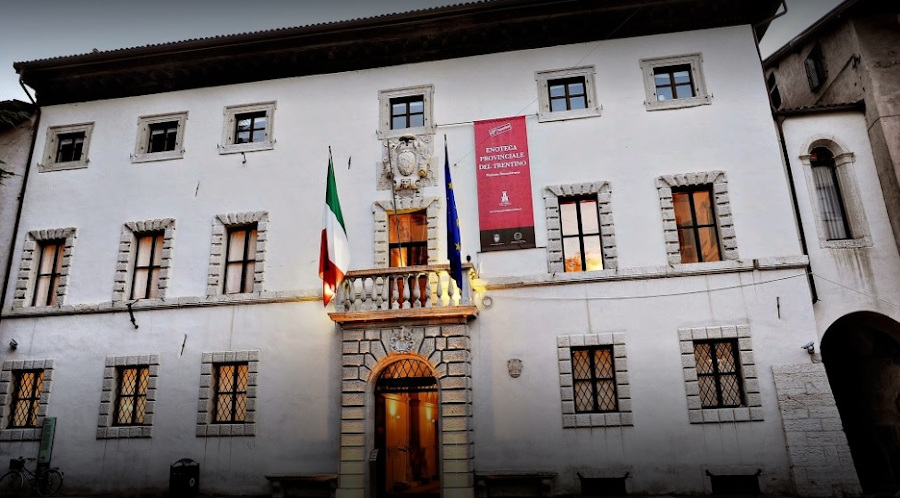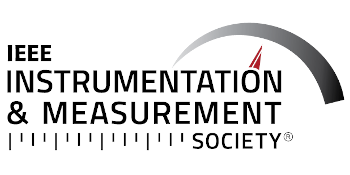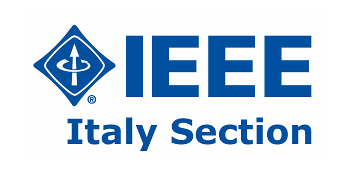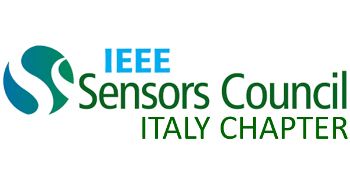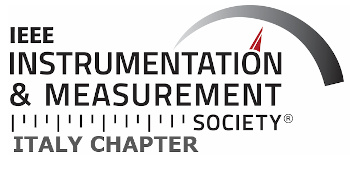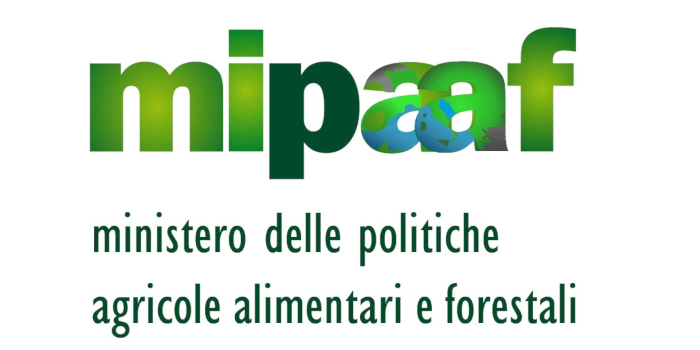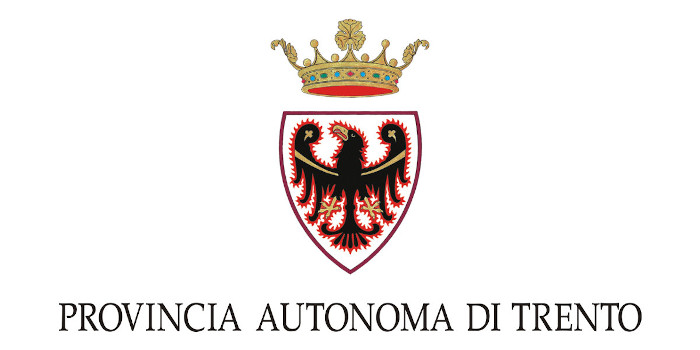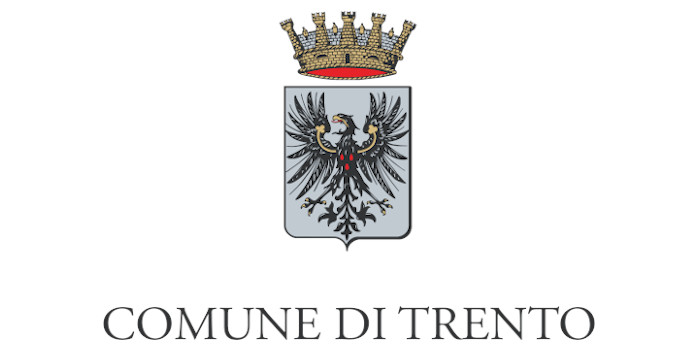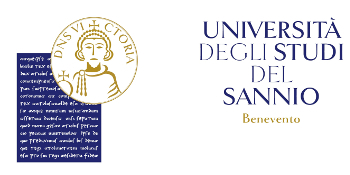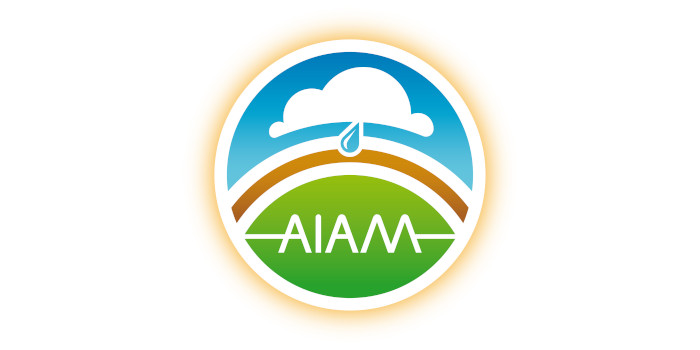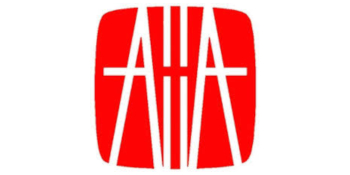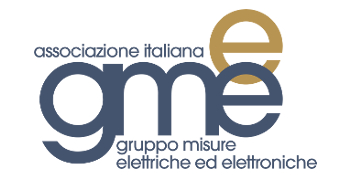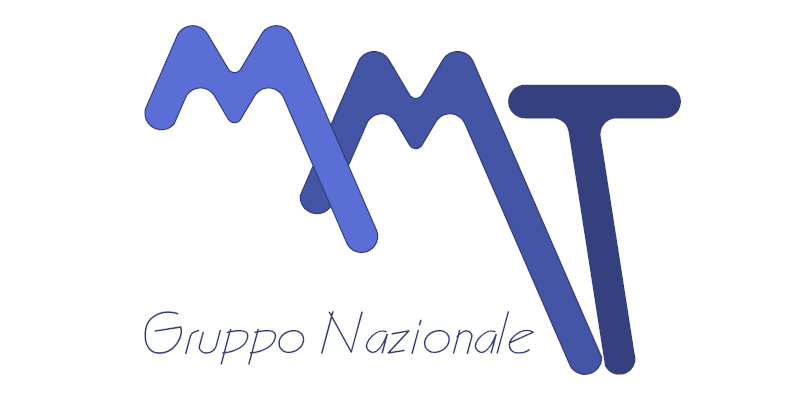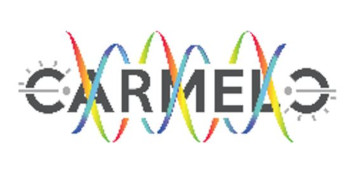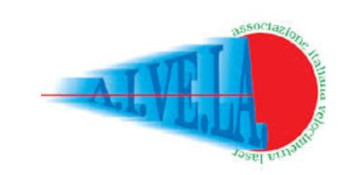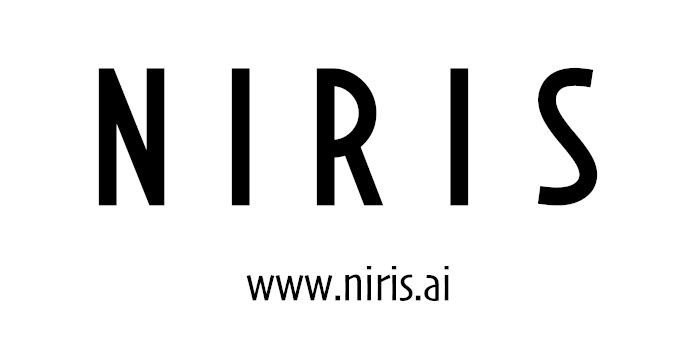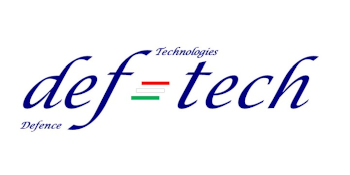Art and architecture, nature and museums have made Trento a cultural hotspot.
Provincial and (autonomous) Regional Capital, this city in Trentino Alto Adige boasts a long, rich tradition and some of the most important monuments in Italian history.
Photogallery
Brief History of Trento
Trento was struck at the base of the rocky spur of the Doss Trento, on the Adige River's right bank (and beneath the Mausoleum of Cesare Battisti), as early as the Roman age.
The city's ancient nucleus was transferred to the opposite bank of the river, while an imposing defensive wall was constructed around it in the Middle Ages.
Around the year 1,000, the Holy Roman Emperor Conrad II founded the Bishopric of Trent; it became a long-standing religious center of notable importance. After all, the famous Council of Trent took place here, giving rise to the Counter-Reformation. The 1500s were the time of Trento’s golden age, thanks to the bishops that advocated for the construction of new churches and edifices.
Later, in the 19th Century, it became the object of a bitter dispute between Napoleon’s troops and the Habsburg Empire. It was only in 1919 that Trento became part of Italy, at the end of World War I.
Trento Cathedral
Trento Cathedral is a Roman Catholic cathedral in Trento, northern Italy. It is the mother church of the Roman Catholic Archdiocese of Trento, and until 1802, was the seat of the Bishopric of Trent. It was built over a pre-existing 6th-century church devoted to Saint Vigilius (Italian: San Vigilio), patron saint of the city.
Bishop Federico Wanga commissioned the architect Adamo d'Arogno to construct the new Lombard-Romanesque church. Works continued for more than a hundred years, with the Gothic style becoming increasingly evident.
The façade has a large rose window including The Wheel of Fortune. Notable also are the lions supporting the columns of the narthex on the northern side and the twisting columns in the apsidal area.
The interior has a nave and two aisles with a transept. The latter has 14th-century frescoes depicting the legend of Saint Julian and the stone statue of the Madonna degli Annegati. The apse of the right transept houses the relics of the local martyrs Sisinius, Marturius and Alexander who died around 397 AD. In the right aisle is the Crucifix Chapel (1682), with a wooden crucifix at the feet of which were promulgated the issues of the Council of Trent, whose sessions were held in the church's presbytery. Painter Ludovico Dorigny also contributed works to the cathedral.
Buonconsiglio Castle
The Buonconsiglio Castle is the largest and most important monumental complex of the Trentino Alto Adige region. It was the residence of the prince-bishops of Trento from the 13th century to the end of the 18th century, and is composed of a series of buildings of different eras, enclosed by walls and positioned slightly higher than the city. Castelvecchio is the oldest nucleus, dominated by an imposing cylindrical tower; the Magno Palazzo is the 16th century expansion in the Italian Renaissance-style as commissioned by the Prince-Bishop and Cardinal Bernardo Cles (1485-1539); the Baroque-style Giunta Albertiana dates from the end of the 17th century. At the extreme south of the complex is the Torre Aquila, within which is conserved the famous Cycle of the Months, one of the most fascinating secular pictorial cycles of the late Middle Ages. Also of exceptional interest are the extensive cycle of frescoes commissioned by the bishops to decorate the interior walls of the Castle, mainly in the late Middle Ages to the Renaissance period. After the end of the Episcopal principality (1803) the castle was used as a barracks; following its restoration in 1924, it became the National Museum, and since 1973 it belongs to the Autonomous Province of Trento. Currently it is the principal attraction among the museum group comprised of four castles which are among the most suggestive and prestigious of the Trentino area: in reference to Trento are Stenico Castle, in the Giudicarie Valley, Beseno Castle, in the Adige Valley between Trento and Rovereto, and Thun Castle, in the Valle di Non.
Palazzo Pretorio
The Palazzo Pretorio used to be the Bishop's residence until the 1250s. Together with the Torre Civica and the imposing structure of the Cathedral of San Vigilio, the church is one of the main features of the striking Piazza Duomo in Trento. Erected in 1220 by the Prince-Bishop Federico Vanga, the palace used to be the seat not only of the Bishops of Trento, but also of the Municipality, the Podestà and the Courts as well. Its main body was built on the remains of two churches: San Giovanni Battista and San Biagio. Decorated with Ghibelline embattlements, the façade features two rows of three mullioned windows on the first floor and mullioned windows on the second floor. Recent refurbishing works have given the fortified palace back its Romanesque, 13th century looks. Today, Palazzo Pretorio houses the prestigious Museo Diocesano Tridentino, which commemorates its famous Council.
Originally, the Torre Civica was Palazzo Pretorio's keep. Built before the 11th century, the tower increased in height several times. With its big clock, it accompanies the flow of time in the square. However, the tower was used in the past as a city jail and it still houses the Campana della Regna, the bell that used to call the arengo, or public assemblies and death sentences, which were carried out in Piazza Duomo beneath it.
Palazzo Roccabruna
Noble residence of the second half of the sixteenth century Palazzo Roccabruna rises in the historical center of the city of Trento, a few steps from Piazza Duomo. Restored and brought to new splendor by the Chamber of Commerce of Trento, the Palace is home to the Trentino Provincial Enoteca, a place dedicated to food and wine events and cultural events aimed at enhancing the territory, its history and its products.
In the rooms on the ground floor there are the Enoteca and the historical collection with over 600 bottles that tell the story of Trentino viticulture. Every week over 100 local labels are paired with cured meats and Trentino cheeses. On the main floor among frescoes and wooden ceilings of the sixteenth century, exhibitions of historical, ethnographic and artistic nature are organized in the course of the year with the activity of the Palace. In the old stable, a modern educational kitchen, equipped for training courses for local chefs and consumers, hosts, during the food and wine events, Trentino restaurants to propose original interpretations of traditional cuisine. The Enoteca organizes weekly appointments dedicated to wines and local products as well as twinnings with similar structures in other Italian regions.
